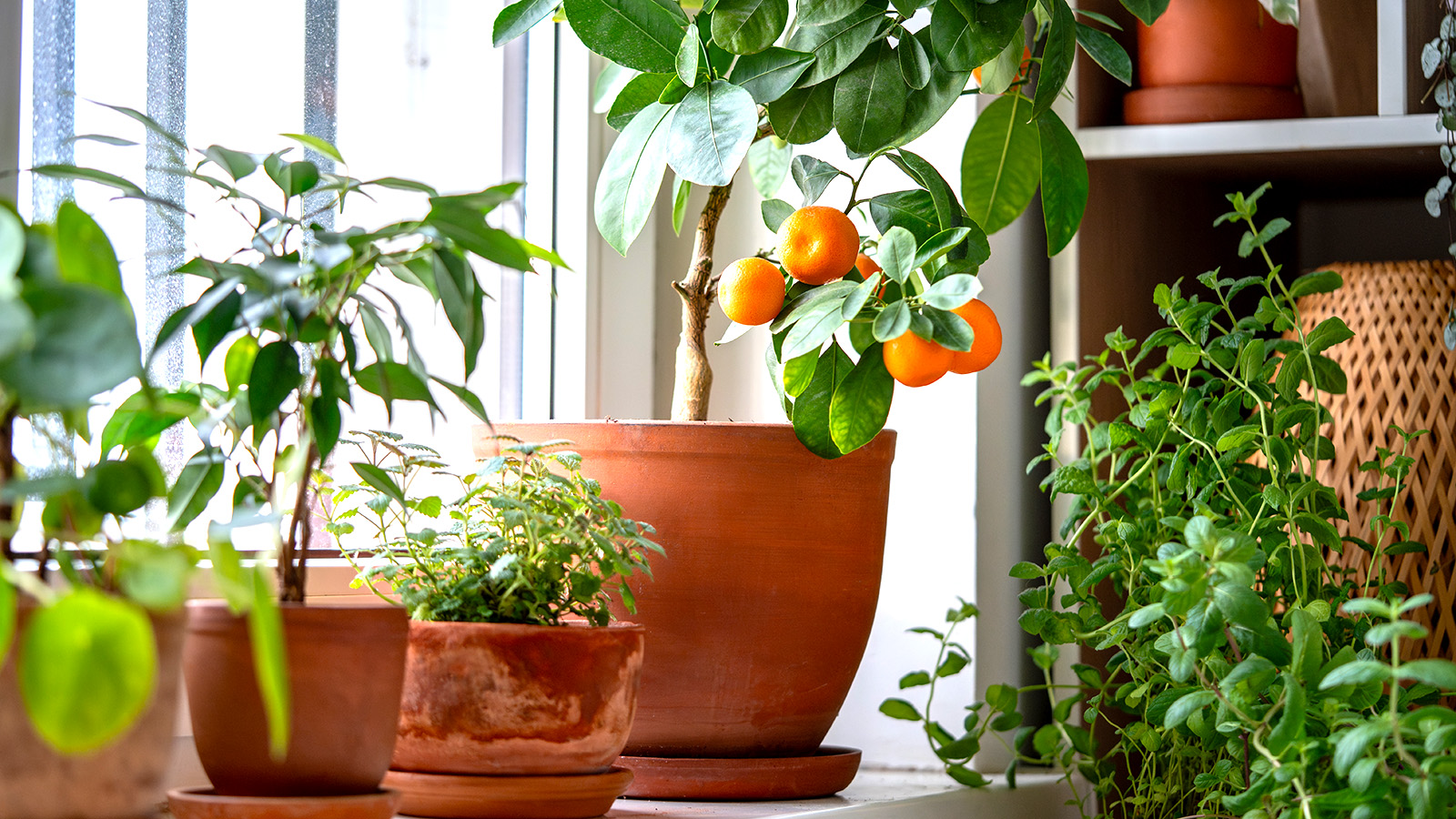
Your garden is likely full of hardy plants that are meant to survive through cold weather and bloom again in the spring, but sometimes they need a little bit of help. As temperatures start to drop and the ground begins to freeze, many plants will struggle in the harsh conditions. Prolonged exposure to winter conditions can cause the water in plants’ cells to freeze, the leaves to dry out, and their enzymes to slow down, which leads to nutrient deficiency and stunted growth. By the end of winter, your plants may be severely damaged or even dead – but there is a way to avoid this.
Bringing your plants indoors will shelter them from the cold and give them a comfortable environment during the winter. This process is known as “overwintering.” Most plants won’t be blooming at this time and can be surprisingly low maintenance; it’s more about giving them a safe place to lie dormant until the spring. For the plants that do grow and fruit in winter, it is even more important that they are in a comfortable place that meets their growing needs. You don’t need to match the peak growing conditions of the summer, but just ensure that the plant is protected from extreme weather.
Which plants should move inside?

Not every plant is suited to live indoors during the winter. If you keep annuals in your garden, then you won’t need to prepare them for next spring as their lifespan is just one year. Instead, you’ll want to buy new seeds or young growth in the new year. At the other end of the spectrum are hardy evergreens and alpine plants, which enjoy the cold temperatures and won’t do well in a warmer indoor environment. These you can leave in place in your garden through spring.
In between, you’ll find a number of perennials that might be well suited to your region’s spring and summer climate, but that struggle over the deepest parts of winter. Depending on their size, it can be very practical to simply move these plants indoors and help them stay healthy through the worst weather. When temperatures begin to rise again, you can simply don your gardening gloves and return them to their outdoor location and enjoy them for another year. This allows you to get the most joy and value from your plants, protecting them from harsh environments and giving yourself some extra greenery inside in the process.
The 7 Plants to Bring Inside Now
1. Dahlias
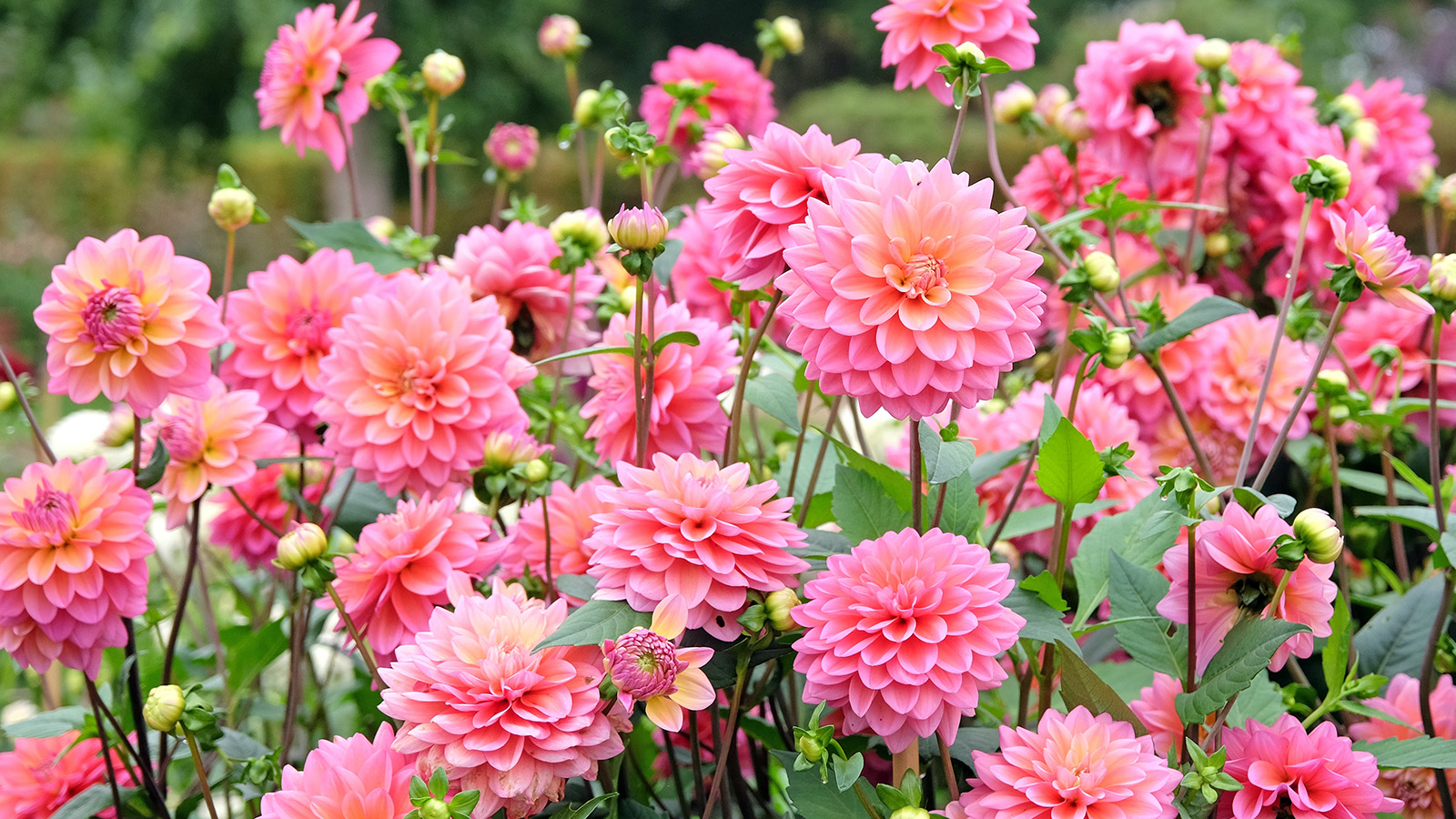
If you live in zones 8-12 then your temperate climate may be warm enough to allow dahlias to remain in the ground all winter long. However, if you’re in zones 1-7 then you’ll want to protect your dahlias from the worst of the cold, if you hope to see them bloom again in the spring. You will know when it is the right time to bring them indoors because the foliage will begin to darken and die off after the first frosts.
Although they’re known for their vibrant, multi-petalled flowers, dahlias are actually tuberous perennials and therefore grow from tubers in the ground, not bulbs; the tubers look quite similar to potatoes. To overwinter, you will need to dig up the tubers from the ground, separate them and leave them somewhere cool and dry. They will cure or dry out over time, preventing any risk of mold or rot, so that they are healthy and ready to be replanted once the ground thaws. While they are drying out and resting, you will not need to water them or tend to them.
2. Begonias
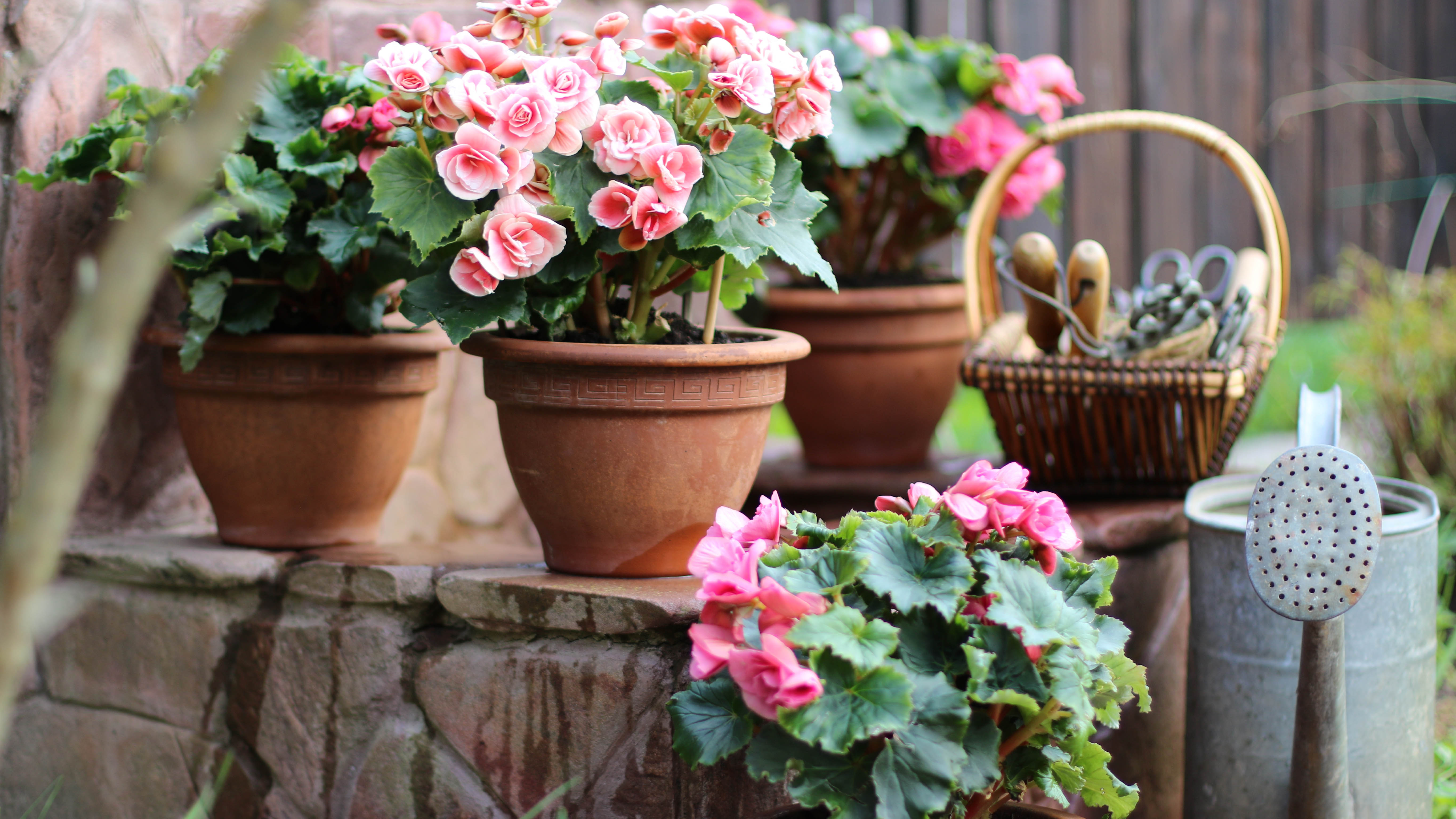
Begonias come in several varieties, so it is important to know which type you have. Some are annuals and therefore won’t require moving, since they will die off after their summer flowering. Others are bred as houseplants and therefore will be kept indoors year round. The third type is a tuberous perennial like the dahlia and therefore will also need to be dug up and dried in order to be replanted again in the spring. As with dahlias, the leaves will reveal when it is time to act; they will begin to yellow and droop. You can also go by the outdoor temperature and move your plants once the weather hits about 45 degrees Fahrenheit.
In the first few weeks of autumn, reduce your watering to help dry out the soil and the tubers themselves. When it’s time to move the plant, cut the leaves down to a few inches high and then dig up the tubers, before moving somewhere cool and dry indoors. Begonias can benefit from some cooler weather in the winter, so don’t keep them anywhere that gets too stuffy, like a kitchen. As with dahlias, you can replant them when the ground thaws in the spring.
3. Citrus Trees
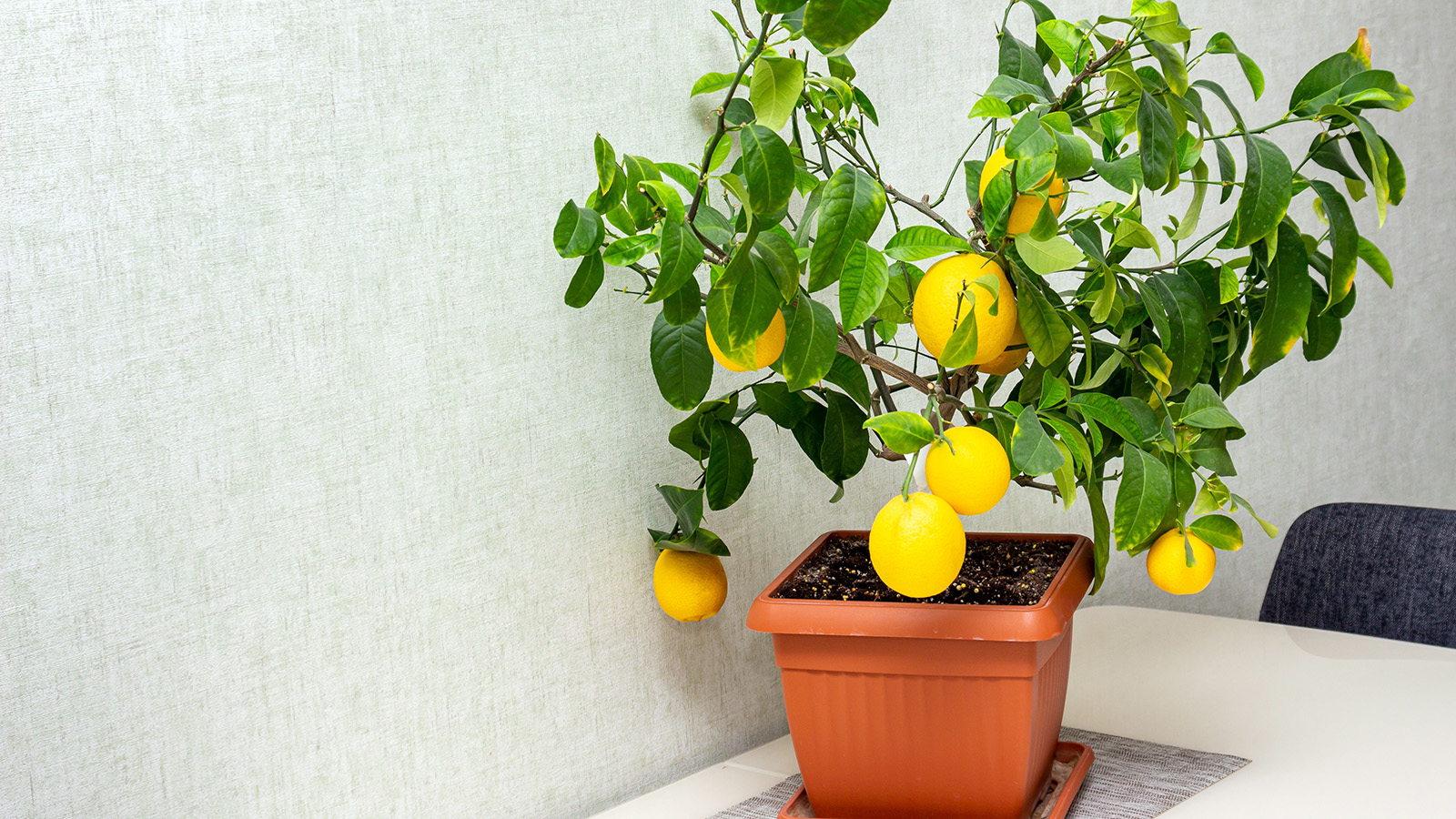
Although you may associate citrus trees with warm climates and the summertime, these plants actually fruit and flower throughout the winter. This means they will require more work and maintenance than a plant that is in its dormancy, but you will be rewarded with a vibrant tree that actively bears fruit. Because of their warm weather origins, it is important to protect them from extreme temperatures and so they should be moved inside before it is freezing outside. They will be able to survive an occasional early frost, but should be brought inside for the worst of the winter weather or whenever the nighttime temperatures consistently dip below 30 degrees.
Since the citrus will be fruiting, you need to ensure that your tree gets a lot of sunlight even while indoors. You will also want to keep it in a relatively warm space that is protected from any drafts or leaky windows; sharp temperature fluctuations can damage the plant. Similarly, heating vents can cause damage by drying out the tree. Ideally, your tree is planted in a container that can be easily moved in and out of the home each year.
4. Alocasia / Elephant Ears
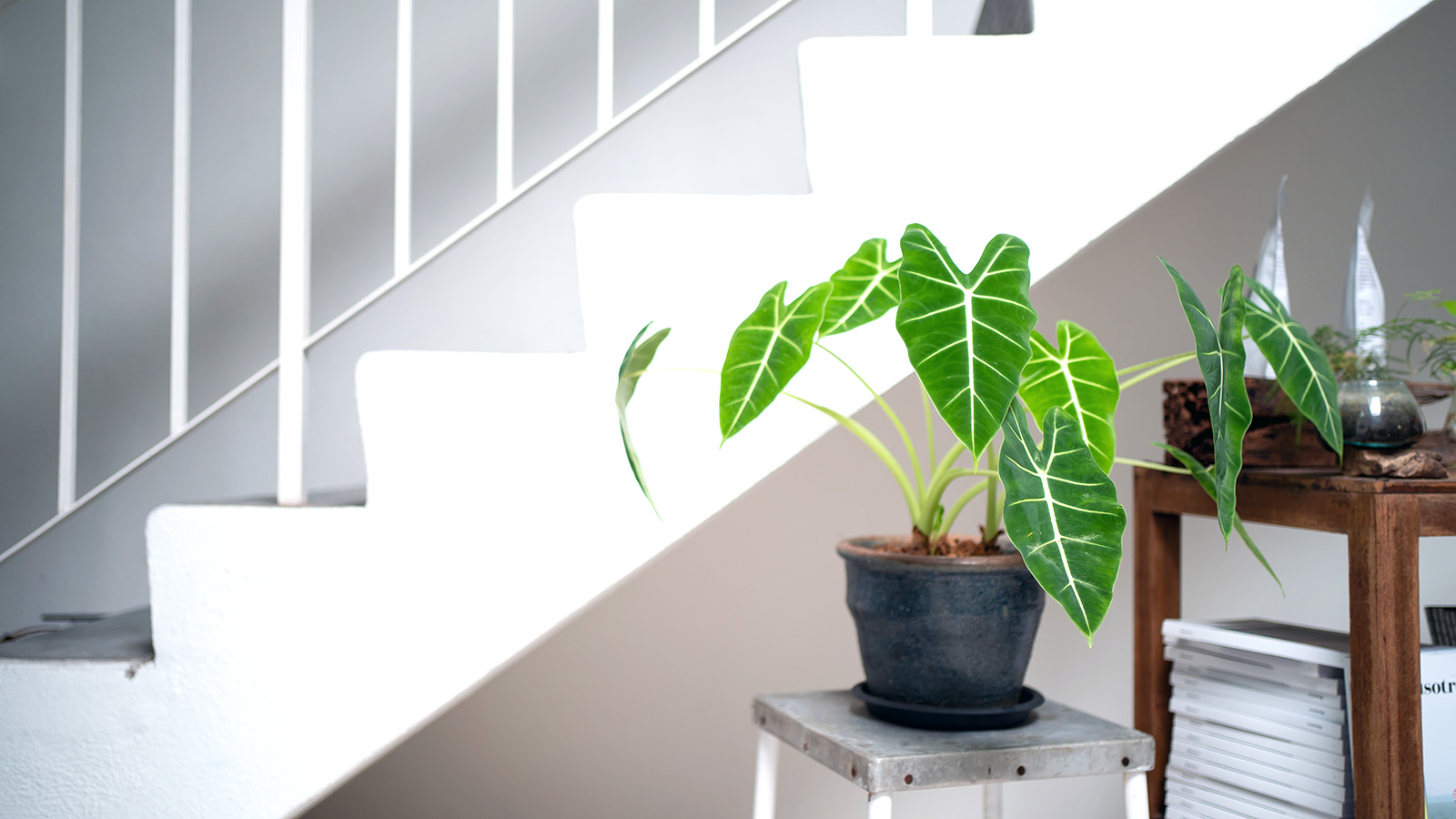
Alocasias are tropical plants that feature large, glossy, green leaves in a distinctive heart shape that has earned them their nickname “elephant ears.” Native to Australia and south Asia, these plants prefer warm and humid climates, but can survive indoors during colder months. Anyone in zones 1-8 will need to bring their alocasias inside for the winter, likely earlier than other plants that are more suited to cold conditions. The good news is that alocasia requires less light than many tropical plants and actually prefers indirect light, so it should be fine in a more moderate winter climate.
Overwintering alocasia can be done in a couple of different ways. If you have a tuberous variety, you will need to dig up the tubers and dry them over the winter for replanting in the spring. If your elephant ears have grown out of bulbs, then you can either dig up the bulbs, remove the foliage and store them over the winter – or just move the entire plant indoors. Alocasia tubers and bulbs should be wrapped separately, stored at temperatures between 50-60 degrees Fahrenheit and kept in dark, dry conditions.
5. Canna Lilies
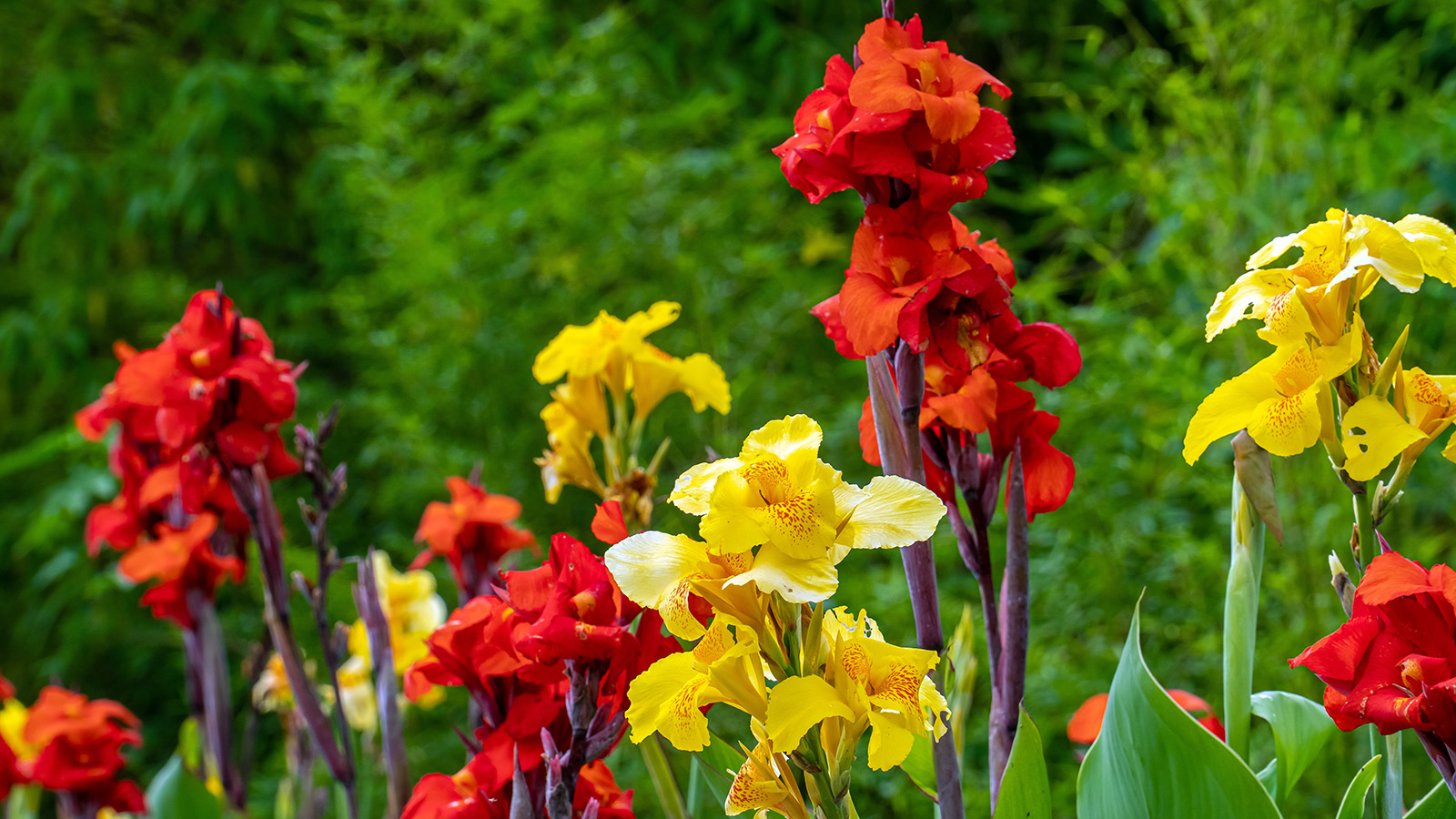
Like several plants on this list, canna lilies are tropical plants that prefer warm, humid environments - hence why they struggle in the winter. However, canna plants are more cold-hardy than some other tropical species and therefore can be kept alive through the winter if they are moved indoors. Temperatures of 40 degrees and below will cause damage to these flowers, so it’s important to move them before they are hurt by winter frosts. If you live somewhere with mild winters and have well-draining soil, you can leave the canna bulbs to overwinter in the ground but be sure to apply a thick layer of mulch.
Otherwise, it is best to dig up the bulbs and store them inside. Wait for the flowers to drop and the foliage to die back before pruning the plant back to a few inches tall. Alternatively, cut all the foliage away and just store the bare bulbs. Delicately remove the plant from the ground to prevent any damage to the rhizome and place in moist soil, in a tray or other portable container. Unlike tuberous perennials that should fully dry out, canna lilies should be kept neither too dry nor too damp in order to survive for replanting in the spring.
6. Ferns

Ferns are a large group of many different varieties, but many benefit from the same treatment come wintertime. If you live in a colder climate or have a more delicate species of fern in your garden, moving them indoors can keep them protected from the harshest winter weather. This is especially important if you keep your ferns in pots, since containers provide less protection from cold temperatures than planting in the ground does. Ferns go into a period of dormancy through the winter, but they do not completely lose their foliage or die down, so you can still enjoy them as greenery in the home until it’s time to return them to the outdoors in the spring.
To successfully bring your fern indoors, it’s important to not shock the plant. Moving the container into a hallway or near a window for a period of time can soften the adjustment process. You don’t need to clip back all of the foliage, but try to remove any brown or broken fronds and check for pests before moving. They can be watered as little as monthly during this dormancy and don’t need a lot of sunlight or warmth, just enough to keep them intact.
7. Coleus
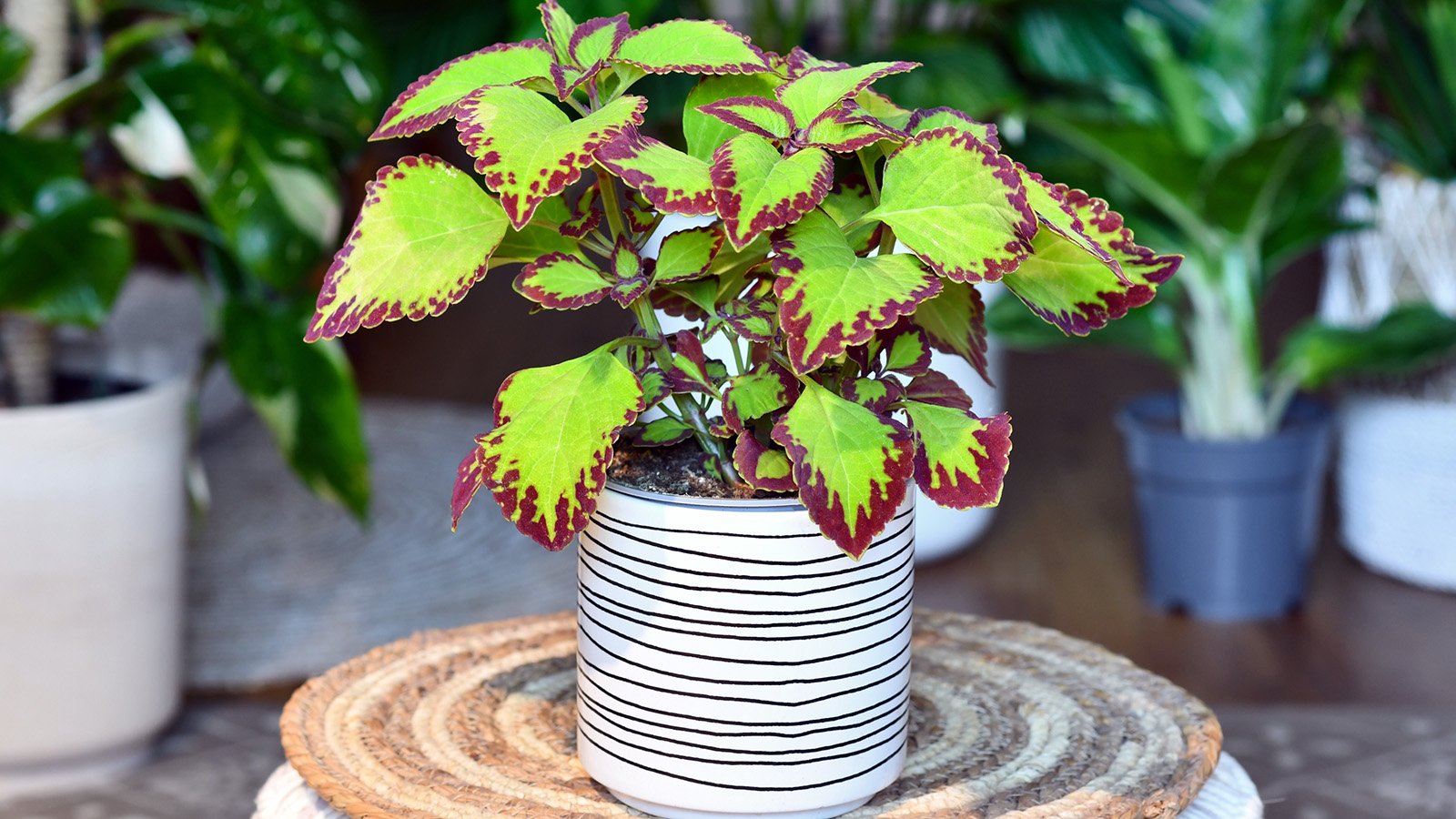
Coleus is not usually kept as a flowering plant but is instead prized for its brightly colored foliage, with many gardeners choosing to remove the small blue or white flowers to promote better leaf growth. One of the most popular varieties features vivid red leaves ringed with yellow, but there are many new patterns and color combinations being introduced. Unfortunately, unless you live in the warm zones of 11 or 12, these plants will tend to die after the summer if left outdoors. Fortunately, there is a way to prolong their life and get years of enjoyment from them: moving them indoors, or propagation.
Once the foliage has begun to fade, you can dig up the plant and repot into a container. This container can be moved inside and watered normally. If you don’t want to go through the hassle of repotting, you can instead take cuttings from the plant and use these to propagate new growth. Coleus is particularly well suited to this; if you chop off the top of the plant and simply place the stem in soil, you will likely see it root and grow anew with no issue. Keep these young plants inside and allow them to grow over the winter, before replanting outdoors once the spring comes.
Tips for Overwintering
The best time to move your plants will depend on the local temperature, but November is generally a good month to get going. Once outdoor temperatures dip to around 45 degrees, this signals that frosts and freezing temperatures are on their way. By acting now, you can ensure that you protect your plants from extreme weather – if you wait until you’re in the thick of winter, serious damage might already be done.
To help your plants adjust to their new indoor environment, it’s best if you can move them to a shadier outdoor location for a short period of time before you bring them inside. This allows them to adjust to getting less sun, so they don’t go into stress and experience damage. If they are in a container, this will be easy to do; if you have them planted in the ground, you might want to string up a shade cover to mimic this effect in a more convenient way. Before you bring them inside, you’ll also want to check for any pests so that you don’t contaminate any healthy plants that are already indoors.
Once inside, it’s important to adjust your watering schedule to account for the new environment. Most plants won’t need as much watering during the winter as they did during the summer, since the colder weather means less water evaporation from the soil.







